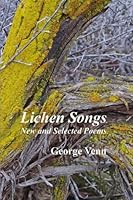Florida Home Grown 2: The Edible Landscape
Select Format
Select Condition 
You Might Also Enjoy
Book Overview
Gardening in Florida is quite different from that in the North. This book answers most of your questions and some you hadn't considered. Although not a new book, it is current in its facts and tips. A must for people who want to start backyard gardens in Florida. This description may be from another edition of this product.
Format:Paperback
Language:English
ISBN:0941263037
ISBN13:9780941263030
Release Date:January 1989
Publisher:Sentinel Communications Co.
Length:303 Pages
Weight:1.70 lbs.
Dimensions:0.9" x 8.6" x 10.7"
More by Tom MacCubbin
Customer Reviews
5 customer ratings | 5 reviews
Rated 5 starsBest Gardening Guide for Florida
By Thriftbooks.com User,
This is simply the best guide to fruit and vegetable gardening in Florida. I've lived here all my life and never grew a real vegetable garden until I read this book. It is ALWAYS on the table beside the couch where I grab it frequently to check on something or just reread sections regarding what I'm about to plant. My garden is always productive, year-round. Tom MacCubbin is the god of Florida gardening! Ask anyone who's...
0Report













































